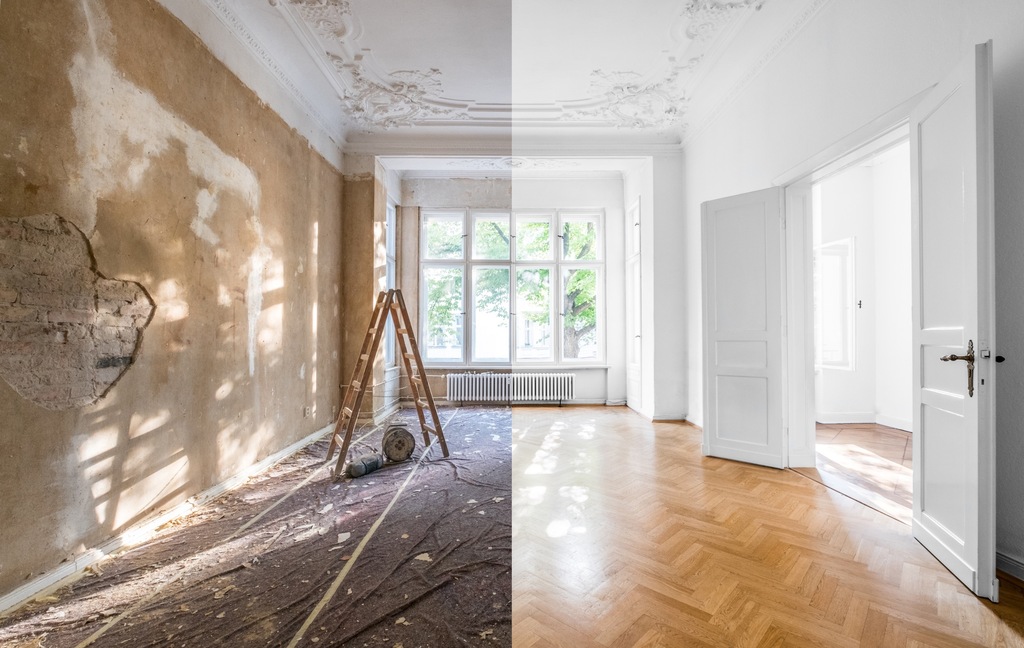Flipping a house can be a highly lucrative real estate investment. Just how much can you make flipping houses? Some real estate investors have seen returns of 15% or more!
When done correctly, fix-and-flips provide a fast return on your investment, allowing you to get in and out of a deal quickly. This short turnaround time means you’ll get your investment capital back within months rather than tying up your funds for years, as is the case with the traditional buy-and-hold real estate investing model.
But home flips require a lot of planning. And since one of the biggest mistakes to avoid when investing in real estate is failing to plan, we at Gatsby Investment are happy to provide free resources, like this house-flipping checklist to help you plan for successful investments.
Here is your fix-and-flip checklist.

Before You Buy a House to Flip
The flipping-a-house checklist begins long before you buy your new property. Here’s what needs to happen before you buy your investment property.
- Get to know your local real estate market. Which neighborhoods are seeing the best value growth? How much should you reasonably expect to pay for a fixer in that neighborhood? And are there any barriers to rehabbing a property in that area (like excessive permit wait times)?
- Understand your budget. How much will go toward the purchase and closing costs, how much will go toward the renovation, and how much will be allocated toward holding costs and closing costs when you go to sell?
- Arrange your financing. Get your cash ready or get pre-approved for a loan. There are multiple ways to finance a real estate investment. Choose carefully to optimize your return potential.
- Find a real estate professional you trust. Agents often have industry connections that can help you find an off-market deal.
- Scout individual properties in your chosen neighborhood. You may end up considering dozens or even hundreds of properties before finding the one you feel has the greatest profitability potential.
- Negotiate the purchase of your new property. Getting favorable terms and a good purchase price is critical to the success of your flip.
- Have a certified home inspector review the property before you complete the purchase. You need to know as much about the condition of the property as possible to know if it’s a wise investment. The property inspection will give you this information.
- Start your renovation planning. Put your escrow period to good use by creating a plan for tackling your renovations and repairs. Make sure you understand what potential buyers are looking for so you can create a home that meets their needs. Prioritize ways to add value without incurring excessive expenses.
- Get your team on standby. Successful home flips are usually a group effort. Unless you plan to do all the work yourself, you’ll need a contractor, a small team of skilled laborers (like plumbers, electricians, painters, roofers, etc.), a designer, a landscaper, a home stager, and a real estate agent to sell your flip (the agent used to buy the property might not be the best fit for selling; use an agent who specializes in listing homes when you sell the property).
- Complete the Purchase. After all this prep work, you’re clear to close on your new property!
House Flipping Renovations
With the property secured, you can begin the renovations and repairs that will add value to your flip. The exact task list will depend on your unique property, but there are several activities you’ll need to complete during the renovation phase for every flip.
Here is your house flipping repair checklist:
- Turn on the utilities.
- Order a dumpster.
- Make sure the team is clear on the renovation plan.
- Take the “before” pictures.
- Order the necessary materials. Always order a bit more than you expect you’ll need to account for human error and materials with imperfections.
- Apply for any necessary permits.
- Demolish as appropriate.
- Begin the property rehab.
- Check in daily. Even if the project is being overseen by a general contractor, it’s ultimately your investment at stake, so you need to know exactly what is happening throughout the renovation.
- Document expenses. You’ll need to maintain accurate financial records throughout the project. Keep a careful record of all repair costs and holding costs.
- Complete a final walk-through. Before dismissing the construction team, conduct a thorough review of the property, confirming that all work has been done to your satisfaction.
Getting Ready to Sell Your Flip
Your work isn’t done when the renovation is complete. You still need to find a buyer for your flip. Here’s a flipping checklist specifically for selling your flip.
- Stage the property. Staged homes statistically sell faster and for more money than non-staged homes.
- Get professional listing photos taken. In most cases, your listing agent will pay for the photos. Make sure you’re happy with the photographer your agent uses and that you’re satisfied with the photos.
- Price your listing correctly. After all the time, effort, and money you’ve invested, you may be tempted to over-price the house. But this strategy nearly always backfires. Rely on your real estate agent to pull comps and help you determine the fair market value for the renovated property.
- List the house on the market. Your agent will list the house on the MLS (Multiple Listing Service) and begin marketing the listing. Do your part by making sure the house is easily accessible and constantly clean.
- Review offers. Offers are about more than the price. Pay attention to terms that could help or hinder your deal, like financing, for example. All-cash offers are preferable, followed by conventional financing, then government-backed loans (which have additional requirements and take longer to close).
- Complete the transaction. And start thinking about your next flip!

Save Time and Effort by Flipping with Gatsby Investment
As you can see, home flipping requires time and effort, as well as specialized skills and knowledge. But, there is another, more convenient way to access house-flipping investment opportunities.
With Gatsby Investment, you can take part in a Los Angeles home flip without handling any of the home-flipping checklist yourself. Gatsby is an LA-based real estate investment syndicate that pools capital from multiple investors to fund local real estate investment projects.
Using Gatsby for your fix-and-flip investments gives you several benefits:
- Rather than funding the entire project yourself through substantial cash outlays and debt financing, you can invest in a flip with Gatsby for as little as $10,000.
- Gatsby has a team of experienced professionals who handle every detail of your flip: scouting properties, negotiating purchases, designing the rehabbed property, managing the renovations, and reselling the completed project.
- Having expert project management provides more favorable yield potential than managing the project on your own.
- With Gatsby’s flexible offerings, you can convert your initial rehab investment into a long-term rental property investment (available for limited select offerings).
All you have to do is sign up with Gatsby Investment and be verified as an accredited investor. This will give you access to all of Gatsby’s investment opportunities. Simply choose which project(s) you’d like to join, and wire your initial investment. Then you can kick back and monitor the progress on your flip without having to complete a single house flip checklist item yourself!